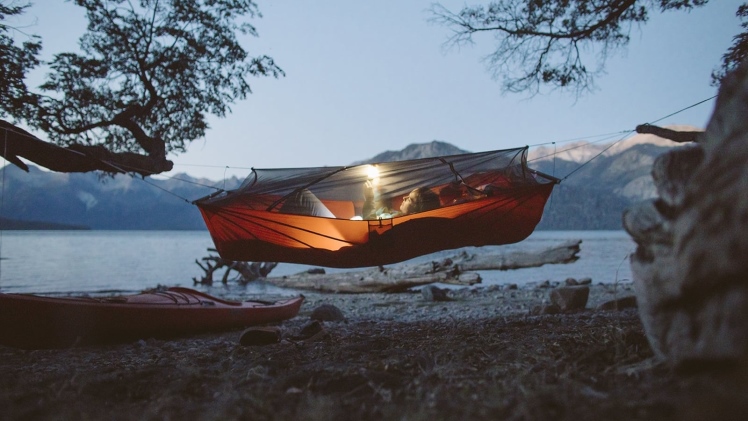There are two important rules to follow when camping near a body of water:
- Pack everything you brought into the wilderness (including garbage, toilet paper, extra food and so on).
- Leave each campsite in the same or better condition than when you arrived.
These common sense rules will ensure that the paddling routes (and surrounding lands) you enjoy remain pristine for both wildlife and humans.
Choosing Your Campsite
Examine your topo maps each morning before setting out to find a suitable overnight stop. This will help you become acquainted with the day’s paddling route as well as plan the day’s breaks and meals so your group can get as far as it needs to go.
Keep in mind that camping spots chosen early in the day are not always visible by the time night falls. Choose a few backup stopping points along the day’s route so that when early afternoon arrives, you’ll have a couple of options to choose from.
Using Established Campsites
When available, stick to established campsites. These locations help you reduce your environmental impact and adhere to Leave No Trace principles. They may also provide basic amenities such as fire pits, level sleeping areas, and pit toilets to enhance your camping experience.
Choosing Your Own Campsite
When no established sites are available, choose your camping location based on the following impact factors:
- To reduce the possibility of source contamination, campsites should be located at least 200 feet away from all fresh water sources.
- Campsites should be located so that they do not harm any delicate plant life.
- Campsites should be located in areas that provide natural or man-made protection from the elements (behind small hills or dunes, under the cover of low trees).
- Campsites should be placed in such a way that they have the least visual impact on other paddlers passing by.
Setting Up Camp
Setting up camp entails a number of tasks. Consider the process to be a collaborative effort. After unloading your boats, make sure they’re secure for the night by carrying them up and away from the water’s edge.
After the boats are safe, set up camp by gathering water, erecting the tent(s), and laying out the camp kitchen. Divide the work among the group members. Try to rotate these responsibilities throughout your trip so that no one gets tired of doing the same thing day after day.
If you’re travelling with a large group, consider creating a rotating job schedule that can be reviewed and agreed upon before your trip begins. A written plan will keep things running smoothly and reduce disputes. Read this blog my kayak guide, if you want to learn more about canoting, boating, kayaking and other water sports gears.
Camp Cleanliness/Personal Hygiene
Wash your dishes, clothes, and yourself away from all wilderness water sources to avoid contaminating fresh water supplies. Use a collapsible sink to transport cleanup water at least 200 feet away from any freshwater source, allowing the ground to filter any waste water before it enters the main supply. If you must use soap, make sure it is biodegradable. Algae blooms are easily sparked by soap residue.
Dig a small cat hole at least 4 to 6 inches deep and at least 200 feet away from all water sources, campsites, and trails when disposing of human waste. After you’ve finished your work, completely cover the hole and pack it down tight. Burn your toilet paper carefully (if permitted) or place it in a sealed plastic bag. Consider using WAG Bags to pack out all human waste in particularly sensitive areas.

